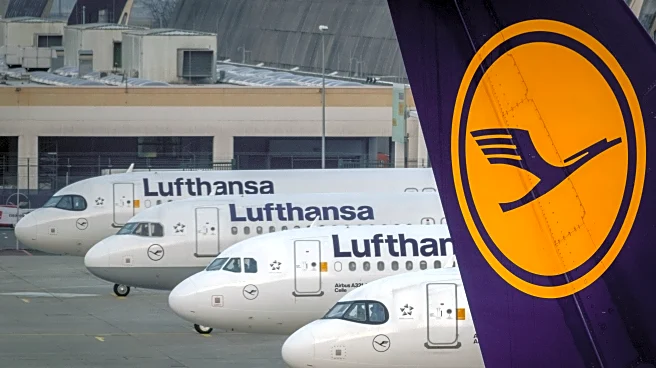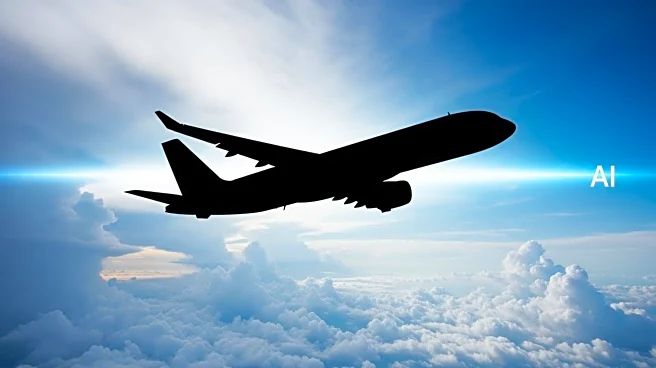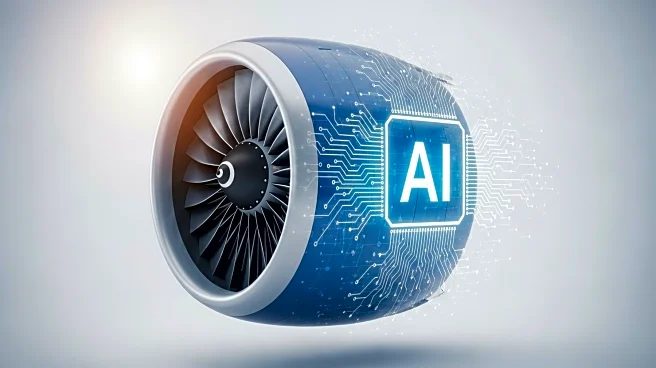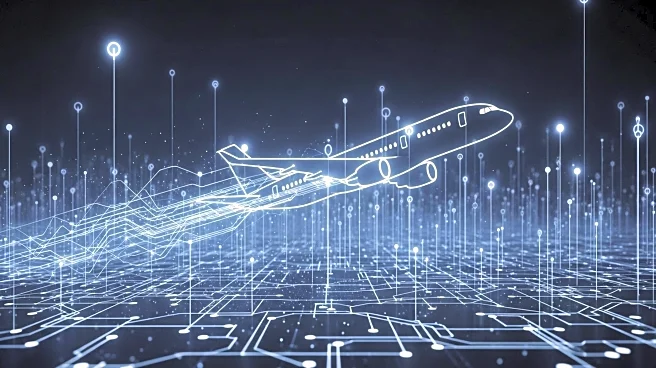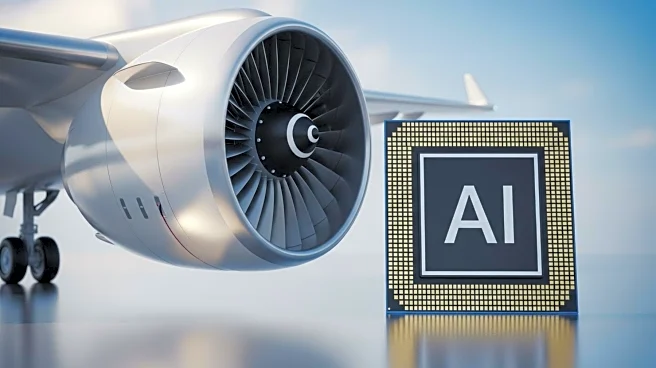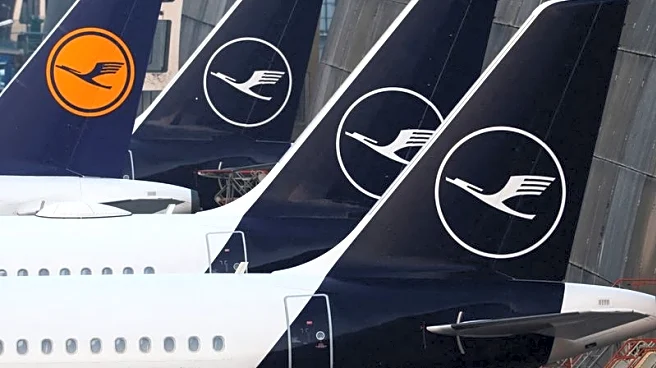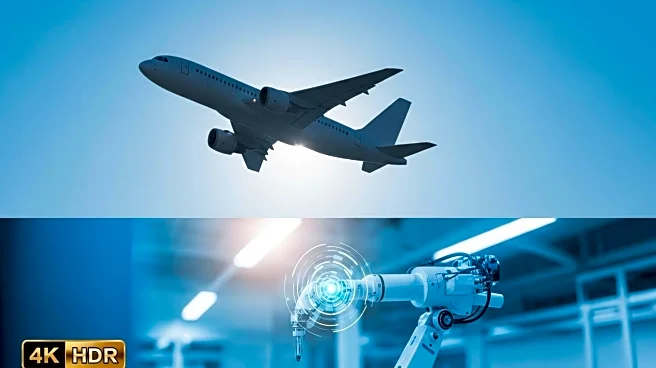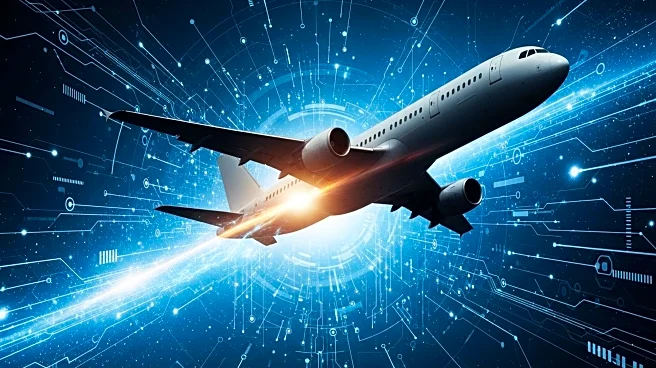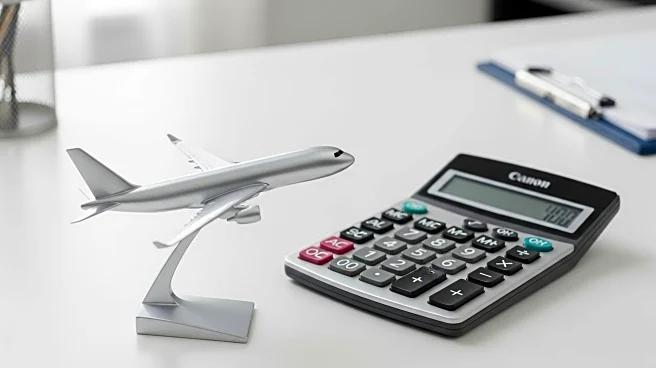What's Happening?
Lufthansa, Germany's national airline, has announced plans to cut 4,000 administrative jobs by 2030. The company intends to utilize artificial intelligence (AI) and digitalization to streamline operations and increase efficiency across its member airlines, which include SWISS, Austrian, and Brussels Airlines, as well as the low-cost carrier Eurowings. This move follows a similar announcement by Bosch, another major German company, which plans to cut 13,000 jobs with the help of AI. Lufthansa's focus will be on reducing administrative roles rather than operational ones, as part of a broader strategy to centralize control and boost profitability. The airline has faced challenges such as inflation-driven staff walkouts and increased operating costs, despite enjoying strong profits after the post-COVID travel boom.
Why It's Important?
The decision by Lufthansa to cut jobs using AI reflects a growing trend in the aviation industry towards automation and digitalization. This shift could lead to significant cost savings and increased efficiency, but it also raises concerns about job security for administrative staff. The move is likely to impact the German labor market, particularly in the aviation sector, where unions like Verdi have expressed opposition to the cuts. The use of AI in job reductions highlights the broader implications of technological advancements on employment, potentially setting a precedent for other industries. Additionally, the restructuring efforts aim to strengthen Lufthansa's competitive position in the global market, which could influence similar strategies by other airlines.
What's Next?
Lufthansa plans to implement these changes gradually by 2030, with a focus on enhancing the efficiency of its operations. The company aims to strengthen its logistics and maintenance units, with potential expansion into the defense sector. The German trade union Verdi is expected to continue opposing the job cuts, urging the federal government to support the aviation sector. As Lufthansa navigates these changes, the airline will need to balance technological advancements with workforce considerations, potentially influencing future labor negotiations and policy decisions in the aviation industry.

